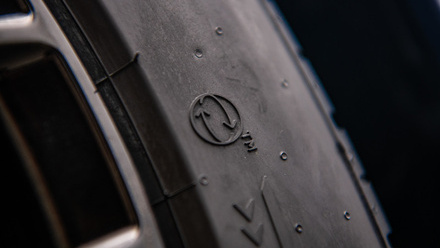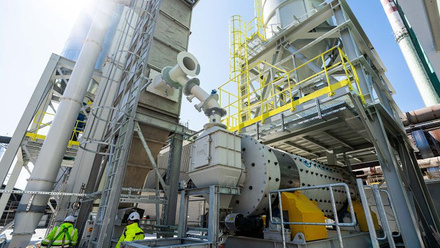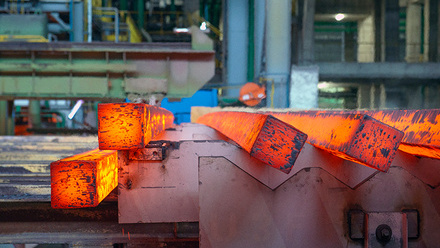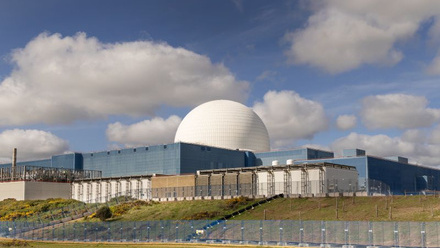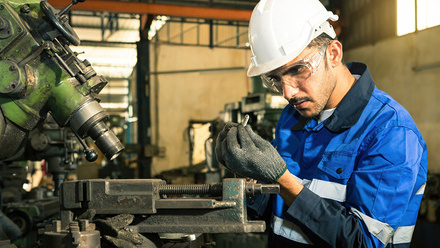Rethinking the PET bottles to textiles loop
Is diverting used PET bottles to textiles the sustainability utopia it’s made out to be?

End-of-life management of polyethylene terephthalate (PET) bottles into r-polyester for textiles is frequently celebrated and prominently featured in sustainability impact reports as a significant advancement towards environmental stewardship.
The fashion industry has adeptly capitalised on this shift. Brands across the spectrum, from fast fashion to those priding themselves on sustainability, present these textiles as guilt-free options for environmentally conscious consumers. But this narrative obscures a somewhat troubling and sinister reality.
By diverting PET bottles – materials inherently capable of being cycled continually within a closed-loop system – into producing textiles that boast “made from X plastic bottles” as a badge of honour, we embark on a fundamentally linear path that typically is a one-way ticket to the landfills. This redirection squanders the potential for a truly circular lifecycle.
Before we dissect the significant shortcomings of redirecting PET for textile use, we must also acknowledge the current imperfections in the PET bottle-to-bottle recycling system.
Originally, this initiative was designed for a closed-loop system, where used bottles would be continuously recycled back into new ones. This circular process aimed to conserve resources by reducing the reliance on virgin materials, thereby lessening the environmental footprint of PET production.
In theory, this is the epitome of circular material use – keeping resources in use for as long as possible and minimising waste. However, it has inefficiencies, particularly in reverse logistics.
Effective reverse logistics are crucial for recycled PET to maintain the necessary quality for reuse in new bottles. The current systems often fail to prevent contamination and degradation, complicating the process and diminishing the output quality.
These challenges highlight the necessity of improved collection and sorting mechanisms that support the integrity and viability of recycled PET. Without addressing these issues, the potential for a truly circular and leak-proof system remains unrealised.
Yet, despite these challenges, the burning question is whether extracting PET from this potentially circular cycle and redirecting it into a linear, ultimately wasteful, pathway can be justified?
Europe alone consumes an impressive 4.8Mt of PET annually for packaging purposes. Of this, bottles alone account for approximately 3.3Mt. But only about 17% of recycled PET bottles find their way back into new ones. The bulk of this material – between 2.6-3.2Mt annually – is diverted instead to the production of polyester textiles. This is according to a Systemiq report on Circularity of PET/polyester packaging and textiles in Europe.
While this approach taps into the growing demand for sustainable products, it glosses over the complete lifecycle of these textiles and their overall environmental impact. Unlike bottles, which can be continuously recycled within a robust closed-loop system, textiles often reach the end of their use-phase only to end up in landfills or incineration plants.
Textiles made from r-polyester face an even higher risk of ending up in landfills, because the reverse logistics and recycling technologies necessary to recycle them back into usable textiles are still in their infancy.
This significant disparity in end-of-life outcomes between PET bottles and textiles underscores the urgent need for a strategic reevaluation of PET recycling practices.
By refocusing resources and efforts on enhancing the bottle-to-bottle recycling loop – improving collection systems, advancing processing technologies and fostering economic incentives for using recycled PET – we could significantly decrease our reliance on virgin materials.
Such strategic realignment would bolster PET’s efficiency of recycling and also enhance its contribution to sustainable material management, steering us closer to achieving true circularity.
And despite the acknowledged inefficiencies in bottle-to-bottle recycling, the rationale for maintaining separate recycling streams for PET bottles and polyester textiles is compelling, driven by the distinct challenges each material presents.
Textiles, characterised by their shorter lifecycles and complex compositions, including dyes and additives, pose unique recycling challenges that are markedly different to PET bottles.
Bottles, typically made from a single type of plastic, offer a more straightforward recycling process. Segregating these streams enables us to tailor the recycling process to the specific needs of each material, and also ensure that each is recycled within the most sustainable and appropriate pathway.By addressing the nuanced challenges of material management in this way, we create opportunities for significant improvements.
Enhancing PET bottle recycling to improve purity and efficiency reduces the need for virgin plastics, while innovative textiles recycling techniques extend fibre life and minimise waste.
By optimising recycling processes to ensure maximum material reuse, we move closer to a future where materials are not merely recycled but are maintained within their most efficient and appropriate loops. In moving forward, stakeholders across the spectrum – from policymakers to industry leaders and consumers – must unite in a concerted effort to revamp our recycling frameworks.
By embracing these strategic changes, we commit to a future that does not just recycle but revitalises our resources, ensuring that our environmental initiatives are deeply effective and aligned with the true principles of the circular economy.


